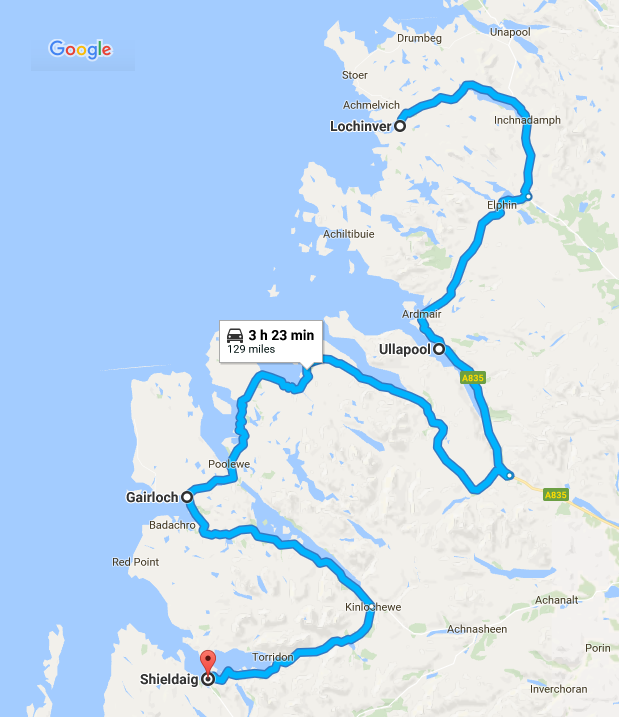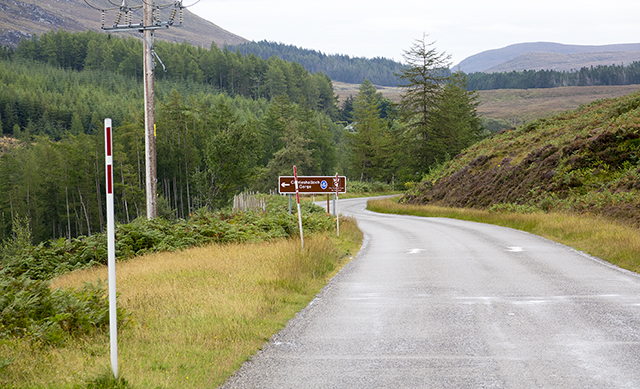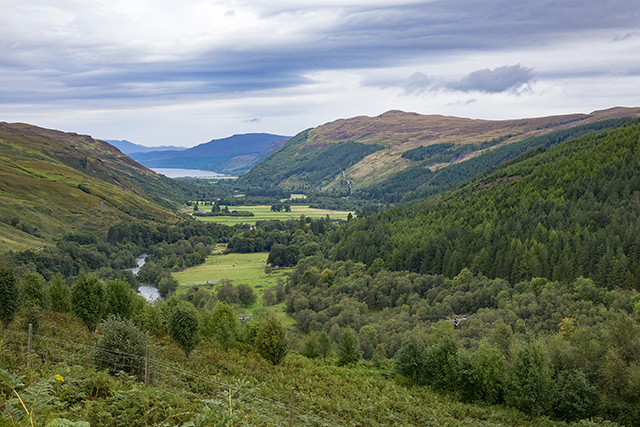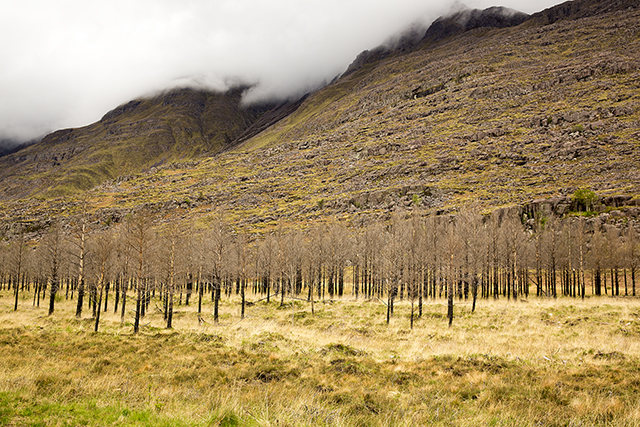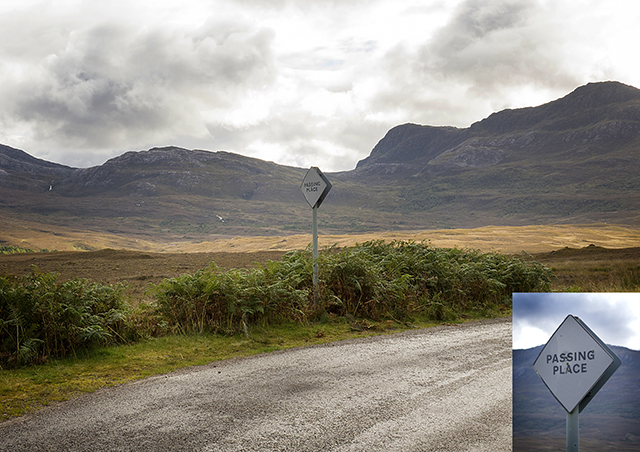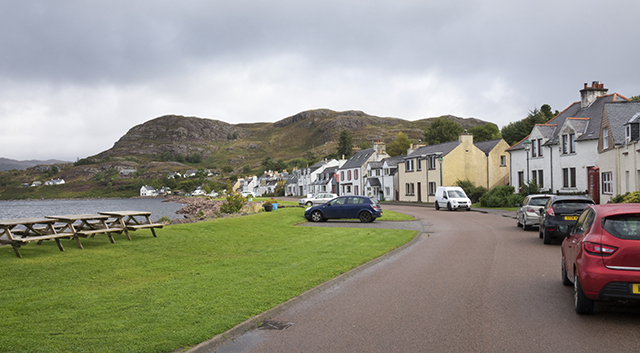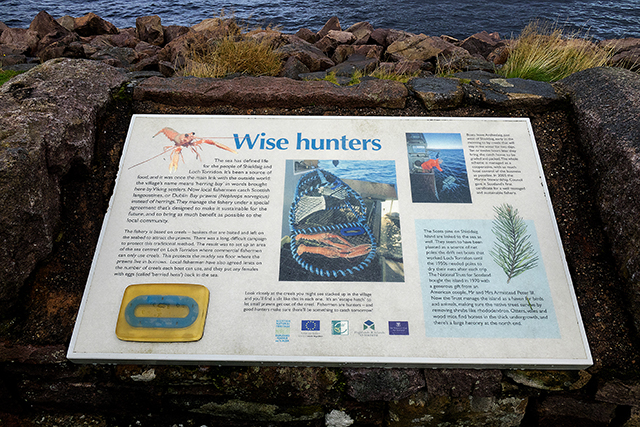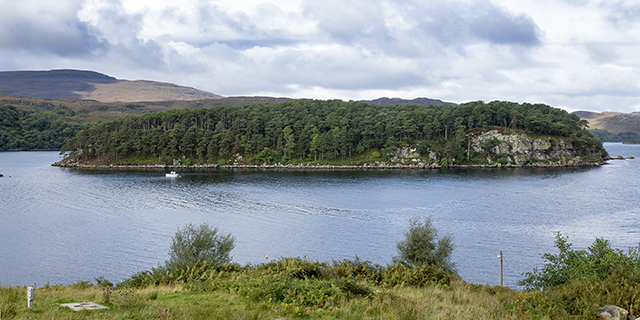In my first post, I wrote about our preparations for this journey. In my second post, I wrote about our first day, going from Inverness to Melvich. In my most recent post, I wrote about our second day, travelling from Melvich to Lochinver. Today we travel South from Lochinver, down the coast to Shieldaig.
Heading South
After a night in Lochinver, we travelled on single track roads that are a real test of your driving skills, down to Ullapool, which is on the coast.
This was the final stopping off point for the Russian Convoys during WW2. You can still see the fuel tanks set into the hillsides.
Officially, the Convoys were “dry” – no alcohol was allowed on board. However, some enterprising locals had other ideas and distilled their own whisky. My father tried a glass during the war and he told me it was highly potent! An uncle of mine was a GP in this area and he was periodically called out to tend to patients “who had that upset tummy he gets from time to time.” Even today, not all the distilleries in the Highlands have visitors’ centres…
South of Ullapool we turned onto the two lane A832, which took us along the side of Little Loch Broom and then around the coast. Many stretches of this road have snow poles on either side, so you can navigate after there has been a heavy snowfall. These are quite common in this part of Scotland.
Further South
Near to Inverewe Gardens, we had our first proper encounter with Highland Midges. September is the worst month for them and they have to be the most vicious little beasties I have ever come across. Don’t come to the Highlands without Midge repellent. Visit Smidgeup.com to order repellent and get updates on Midge activity in the Highlands.
i can also recommend that you visit this blogpost on the “How I get rid Of” website for further recommended midge repellants.
The scenery on the west coast is dramatic, with steep-sided mountains, covered in low cloud and fast running rivers feeding little lochs. Visitors are advised not to use passing places as temporary car parks, so that they can take photographs.
Passing places serve two functions (a) to allow traffic coming in the opposite direction to go through and (b) to allow faster traffic behind you to overtake. With regard to the latter function, visitors should avoid holding up locals, whose knowledge of these roads means that they will always be quicker than you are, whatever car or van they are driving. Passing places are marked with white diamond shaped signs, many of which have been used for target practice by local shooters.
We called in to Gairloch, where two sets of aunts and uncles used to live. I have fond memories of this village from holidays I spent here. My Uncle Hamish was the GP for this area and my Uncle Hugh used to drag me round the 9 hole Gairloch Golf Course, in the hope of turning me into a golfer.
Shieldaig
Our next overnight stop was in the village of Shieldaig, which often appears in the list of the prettiest villages in the UK.
We stayed in the Tigh an Eilean Hotel, which belonged to my paternal grandparents after WW2, along with the village Post Office and I have cousins who live in the village. This part of Scotland is famous for the quality of its locally caught shellfish and fish which feature heavily on the hotel’s menus.
The village name is a Viking word meaning “Loch of the Herring.” The waters on the West coast of Scotland are some of the purist in the world and most of the locally-caught shellfish are exported overnight to Spain, where they fetch the best prices. There is a display board in the village entitled “Wise Hunters”, which commemorates the local fishermens’ careful approach to conservation. On this board is a photograph of one of the fishermen, my cousin John MacGregor and the “escape hatch” that he designed to allow smaller langoustine prawns to escape. For this invention, he was given a conservation award by HRH Prince Charles and he also featured in one of Rick Stein’s “Food Heroes” programmes.
We highly recommend The Loch Torridon Smokehouse for their smoked salmon and they offer a mail order service. I can’t think of any smoked salmon that I’ve tasted that is better than this.
Facing the village is Shieldaig Island, which is now a nature reserve. There is a heronry on the island and enormous Sea Eagles nest here. You can see them from the road.
On our third day on the NC500, we had travelled 129 miles at an average speed of 37 miles an hour. A relatively easy drive but I knew that tomorrow, we would face one of the toughest roads in the country.



